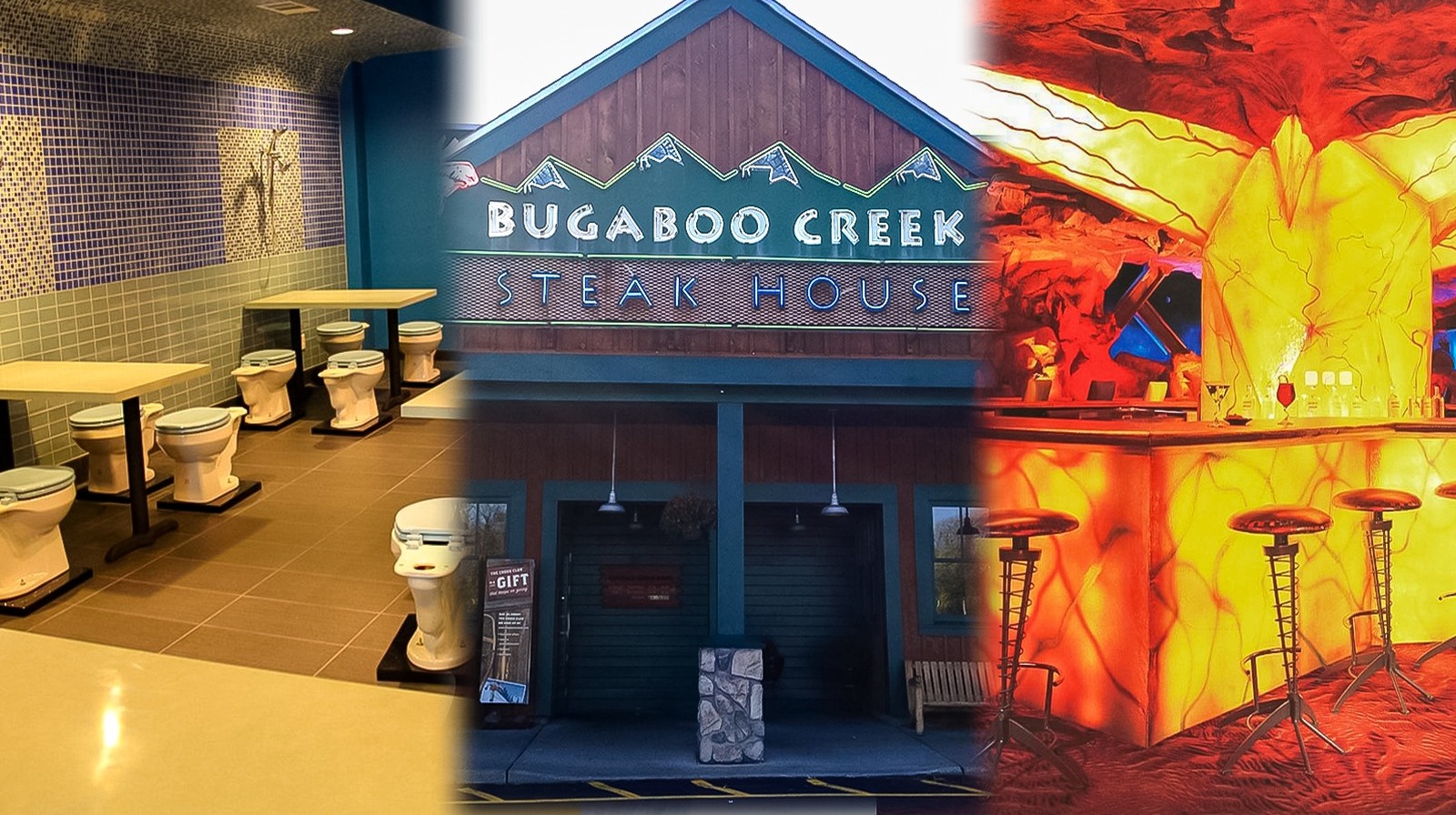In an era preceding the ubiquitous presence of fast-food chains, dining outside the home was a truly extraordinary event. The competitive nature of the culinary world propelled restaurateurs to innovate, striving to distinguish their establishments. While some focused on gastronomic excellence, others pioneered the concept of the theme restaurant, transforming a simple meal into an immersive entertainment experience. These creative ventures sought to captivate diners from arrival to departure, often incorporating performers, elaborate decor, or a blend of both, marking a significant evolution in restaurant history.
Among the most enduring and memorable theme restaurant formats were those leveraging animatronics. The 1980s saw Chuck E. Cheese and ShowBiz Pizza Place drawing families with their robotic character shows. This concept even extended to more mature dining, with Bugaboo Creek Steak House aiming to provide animatronic entertainment within a steakhouse setting, a stark contrast to their kid-centric predecessors. Another peculiar trend was the “pizza and pipes” movement, exemplified by Organ Grinder Pizza, which featured immense pipe organs bellowing classic tunes, creating a strangely theatrical backdrop for casual dining, inspiring a host of forgotten eateries.
The early 1980s also sparked predictions that robots would soon dominate the restaurant service industry. Leading this speculative charge was the Two Panda Deli in Pasadena, California, recognized by Guinness World Records as the first U.S. establishment to employ robots as food runners. Owner Shayne Hayashi invested significantly to bring in Tanbo R-1 and Tanbo R-2, envisioning them as a glimpse into the future of automated hospitality, making it one of the most unusual dining spots of its time.
Beyond technological novelties, some restaurants ventured into highly specialized or bizarre culinary concepts. Weenie World, a short-lived hot dog chain, introduced the “Weenie Whirl,” a circular frankfurter designed to fit perfectly into a hamburger bun, offering eccentric topping combinations like the “Surfboard Weenie” with raisins and pineapple. Similarly, pop culture icon Pat Boone attempted to parlay his fame into a restaurant venture with Pat Boone’s Dine-O-Mat, aiming for a sustainable income stream after his music career waned, adding to the rich tapestry of historic restaurants.
Other establishments carved out niche themes that were less about technological spectacle and more about an immersive, almost theatrical, ambiance. Monk’s Inn, opened in 1969 near Lincoln Center in New York City, catered to patrons who appreciated ancient religious rituals alongside a love for cheese. This inexpensive yet hip spot featured male servers in monastic robes, serving a menu almost exclusively dedicated to cheese-based entrees, with the various cheeses prominently displayed, making it a truly distinctive and forgotten eatery.
Regrettably, the history of theme restaurants also includes darker chapters. The C**n Chicken Inn, a chain from the 1920s to 1950s, epitomized a casual yet aggressive form of racism. Its entrance, shaped like a caricatured Black railroad porter’s mouth, and its menu featuring stereotypically associated foods, represented a deeply offensive and problematic concept. Despite its commercial success at the time, operating its own bakery and poultry farm, the inherent bigotry of its theme eventually led to its closure, a stark reminder of the less savory bizarre concepts that once existed.
Pop culture fads also inspired several short-lived dining experiences. The immense popularity of “Rowan and Martin’s Laugh-In” led to a restaurant chain of the same name in the late 1960s. These establishments featured psychedelic decor and a menu with items named after the show’s characters and catchphrases, like the “Bippyburger” and “Sock it to Me soup.” Despite initial franchisee interest, the restaurants quickly became dated once the TV show’s relevance faded, illustrating the transient nature of novelty-based theme restaurants.
Even more recent entries into the realm of unusual dining include the Magic Restroom Café, which debuted in 2013 in California, embracing a toilet-themed concept, drawing inspiration from a similar Taiwanese establishment. Piratz Tavern, a pirate-themed bar and restaurant, gained a loyal following with its raucous atmosphere and immersive design, though it ultimately succumbed to poor management. Finally, Mars 2112, a colossal Times Square establishment, offered diners a kitschy, sci-fi vision of eating on the red planet, rounding out a list of the most peculiar and often short-lived historic restaurants.






Leave a Reply